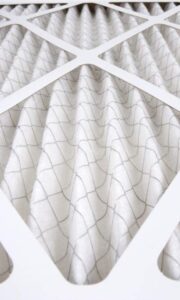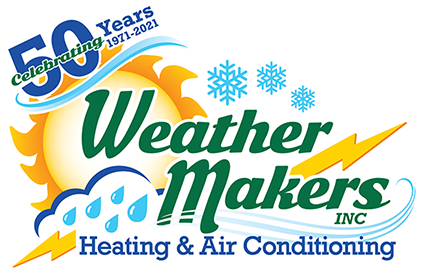 While most of us think of air pollution as a problem we face when we step outside, indoor air pollution can be even more dangerous, especially when it’s inside your home. We spend most of our time at home, and when indoor air quality is lacking, the effects on your health can be very serious. Fortunately, it’s relatively easy to improve your Virginia home’s air quality by cleaning your HVAC system, changing your filters, and adding ventilators and air humidifiers.
While most of us think of air pollution as a problem we face when we step outside, indoor air pollution can be even more dangerous, especially when it’s inside your home. We spend most of our time at home, and when indoor air quality is lacking, the effects on your health can be very serious. Fortunately, it’s relatively easy to improve your Virginia home’s air quality by cleaning your HVAC system, changing your filters, and adding ventilators and air humidifiers.
What’s Indoor Air Quality?
Contaminated air is a major concern to healthcare practitioners because it can have serious, long-term consequences on the health of those who breathe it. Many people don’t realize just how dangerous it can be because most of this pollution doesn’t come from a single source. Instead, the problems are a cumulative effect from several different ones.
Your Virginia home’s indoor air quality may be affected by several types of contaminants, including particulate matter and gasses.
Particulates are small pieces of solid material that float in the air. Some particulates are clearly visible while others are microscopic and can’t be seen with the naked eye. Particulates are a common cause of allergic reactions and may produce such symptoms as red eyes, itchiness, sneezing, runny nose and rash. In addition, they may trigger asthma attacks or cause asthma-like symptoms, including coughing, wheezing and difficulty breathing. A few of the most common indoor air particulates are as follows:
- Dust
- Pollen
- Smoke
- Animal dander
- Combustion byproducts, such as those created when cooking
- Microorganisms, such as insects, mold, bacteria and viruses
Gaseous pollutants are often more dangerous than particulates. Most of these occur as a result of combustion, such as when you cook on a gas stove, smoke cigarettes or are exposed to vehicle exhaust from outside. However, other polluting gases may emanate from the ground under your home or the materials that were used to build or remodel it. Following are some of the dangerous gaseous pollutants that are commonly found in residences:
- Gases from smoking cigarettes or other tobacco products – When tobacco is burned, thousands of different gases are released into the air.
- Carbon monoxide – This gas is difficult to detect because it’s colorless and odorless, but it can cause dizziness, headaches, nausea and even death.
- Nitrogen dioxide – Nitrogen dioxide is also colorless and odorless, causing irritation of the eyes, nose and throat, difficulty breathing, and respiratory infection.
- Volatile organic compounds (VOCs) – VOCs are chemicals that are released into the air through products that are used indoors without proper ventilation, such as cleaning supplies, paint, paint stripper, lacquer, varnish, pesticides and office equipment.
- Radon – Radon is a radioactive gas found in soil that can enter your home through cracks or holes in the foundation. It’s the second-leading cause of lung cancer after tobacco smoke.
How Do You Improve Indoor Air Quality?
While dangerous particulates and gasses may be creating indoor air pollution in your Virginia home, it isn’t difficult to clean these materials from the air, stop them from circulating and prevent them from returning. A combination of air filters, air cleaners, air humidifiers and ventilators works for nearly all homes, whether they’re single-family houses, condominium units, duplexes or apartments.
A great deal of pollution can be kept from entering your home by making a few small improvements. This strategy is known as source control. Following are the top methods of source control.
- Weatherizing – Your home should be weatherized to reduce the amount of energy required for climate control. Proper weatherization may also prevent mold and mildew from growing in warm, damp areas, and it can keep dangerous pollutants outside. However, you must ensure that you still have adequate ventilation.
- Ventilation improvement – Ventilation is important for every home because some air pollutants are created inside and need to be released outside. Ventilation can be improved by installing dedicated ventilators, opening windows or filtering the air through your HVAC system.
- Air cleaners – Several types of electric air cleaners are now available. Some of these cleaners are freestanding units while others connect directly to your HVAC system. While a few of these cleaners are very effective at eliminating or reducing pollution, many others aren’t. In addition, air cleaners can’t eliminate every type of contaminant that may be in your air.
Contact an Experienced HVAC Contractor
It can be a difficult job trying to improve your indoor air quality, and it is even more difficult to ascertain whether your efforts have had any affect. For the best results, contact a Virginia HVAC contractor or heating and cooling specialist. A local technician trained in controlling air quality will know how to measure pollutants and develop an effective plan.


